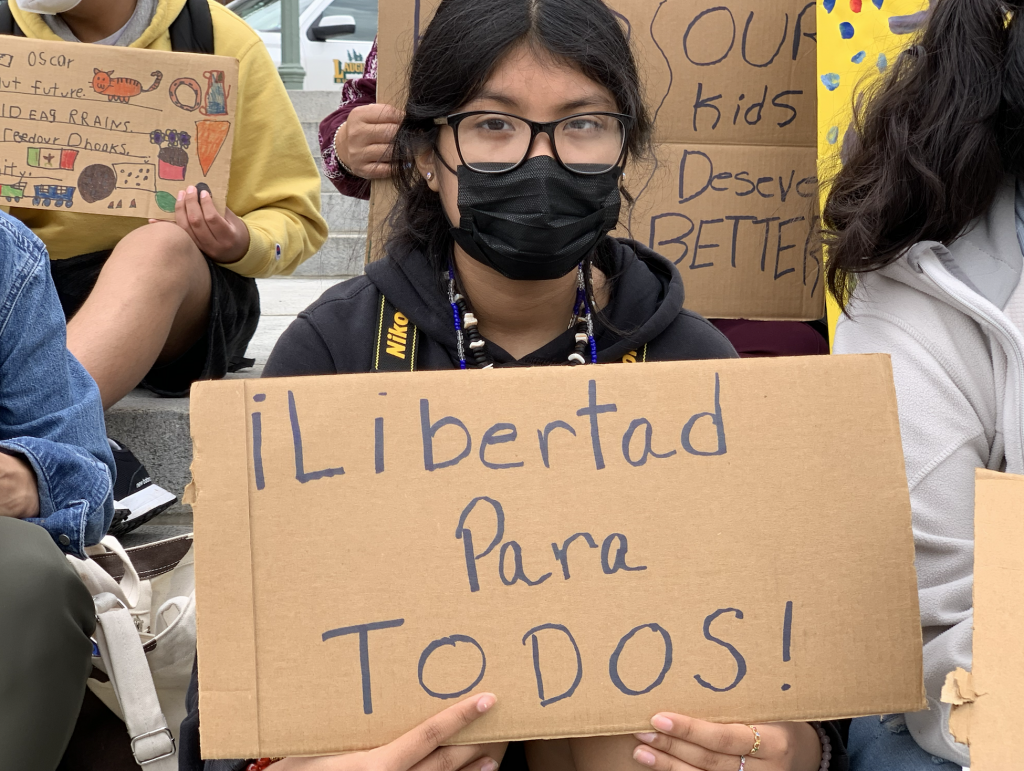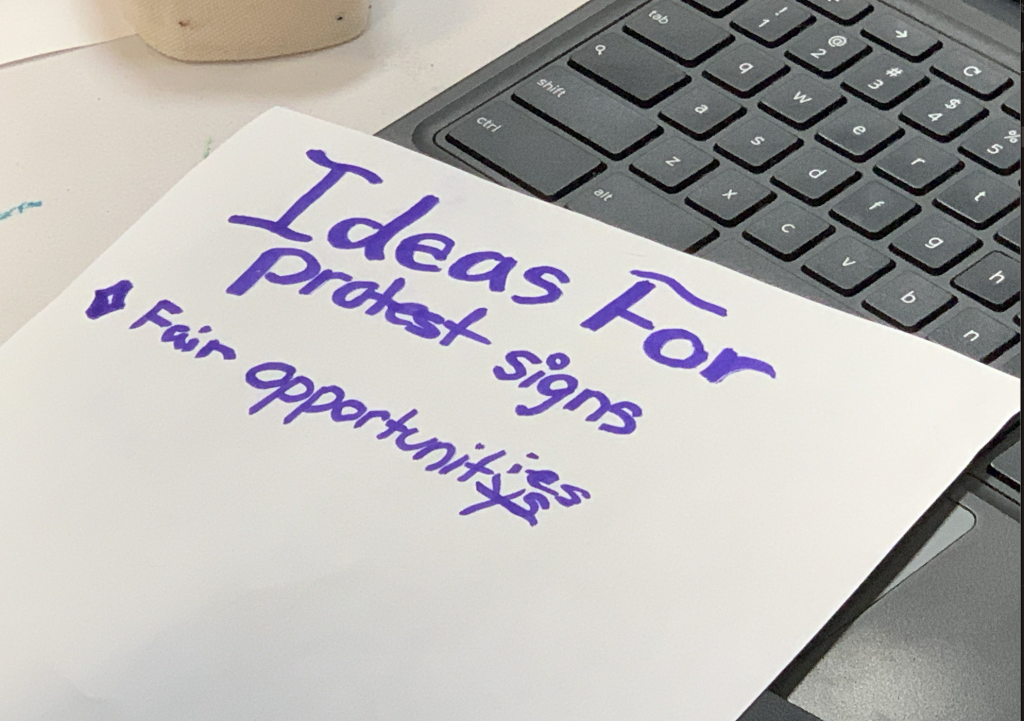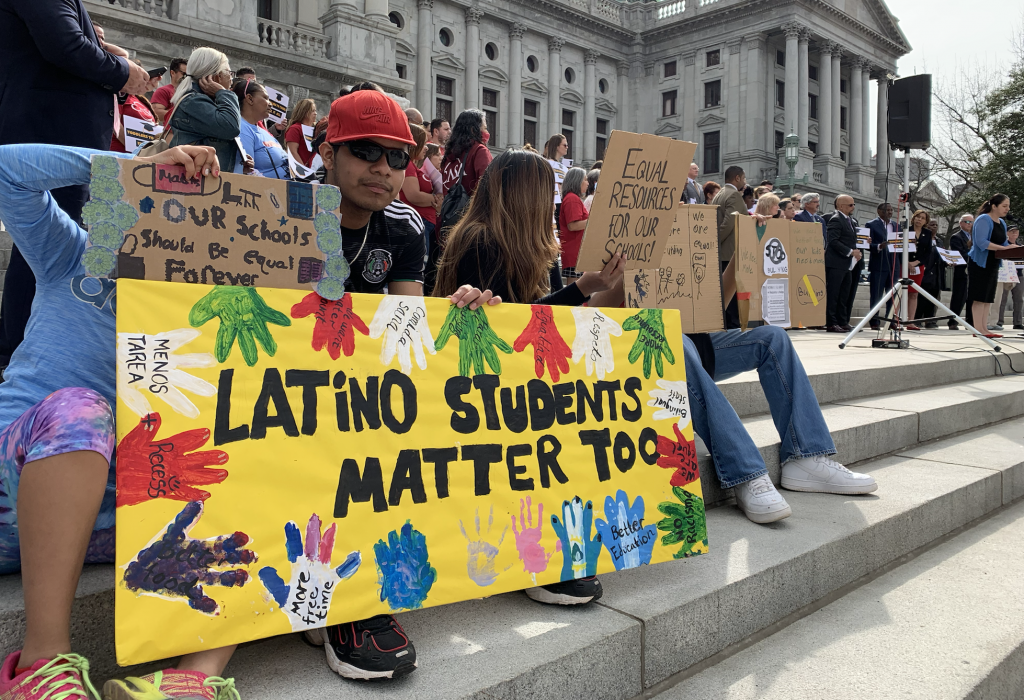
By Pam Margolis
Pablo Picasso said that art is research and experiment: I agree. Too often as children we are told that art is only valuable when it is finished or if it is made by someone important. But I believe the value is in the process. Through making art of any kind, we are experimenting—trying new things, learning about ourselves, learning how art makes us feel, developing techniques, or simply enjoying the act of creation. I feel the same way about writing. Unlike what we are taught in school, I believe there is no right or wrong way to write because writing is personal. Like art, it is also a process of experimenting with technique, developing new skills, or getting an idea out of your head and down on paper. When we are writing we connect with our thoughts; sometimes our thoughts are for ourselves and sometimes they are for others. This semester we’ve changed the name of the writing class at CCATE from Finding Your Voice to Lifting Your Voice. The reason for the change is that our kids already have a voice inside them: they are fully creative, thoughtful, passionate, and intelligent human beings. The problem has been that they haven’t had enough opportunity to express their perspectives in ways that suit them. School tells them how, when, and what to write. Our writing class helps them amplify or lift the voices they already have, through experimenting with different methods that highlight their perspectives, hence the name change.

Watching the kids collaborate with the volunteers and eachother, I see not just the process of writing but also the trial and error of research. I believe this is the process of experimentation that Picasso spoke about. CCATE kids might not know it, but their art is also resistance, pushing back at dominant narratives by creating their own counterstories. ¡Viva la Resistencia!
One method we are exploring is self-expression through body language, movement, and voice. We have had fun learning acting skills which we are using to express ideas, feelings, and emotions which will enhance our storytelling abilities. We are putting these new skills to work designing and writing our own Theater of the Oppressed, a form of theater influenced by Paulo Freire and designed to promote social change. Our Theater of the Oppressed takes the form of Kamishibai, a Japanese word meaning paper play. A Kamishibai is a small theater, like a puppet theater, with doors revealing illustrated cards with pictures on the front and words on the back. The reader stands behind the theater and tells the story one card at a time. It is a form of storytelling that is suited for all children. We learned about Kamishibai and watched a video retelling a Japanese story read by a Scottish man in a kilt and a Japanese woman in a kimono: there was music, singing, and hand movements! For our stories, the children have identified conflicts in their lives that needed resolution, worked in groups to write their stories, and created illustrations. Everyone pitched in to design and build theaters of various sizes that reflect the children’s creative interests.


Pam Margolis
Pam Margolis is a doctoral student at West Chester University studying curriculum and instruction. She is passionate about equity in education for children from marginalized groups: African American, Latinx, disabilities and LGBTQ. She is an expert in the curation, development, and expansion of curriculum and library resources representing children from marginalized communities. Pam has an Executive Master of Public Service from the University of Arkansas Clinton School of Public Service, a Master’s in Library and Information Science from Drexel University, a BS in English Writing and post baccalaureate in Teacher education, as well as K-6 Elementary Education certification and K-12 Library Media Specialist. Committed to the marriage of civic engagement and education, Pam serves her community as Perkiomen Township Supervisor.
Leave a Reply